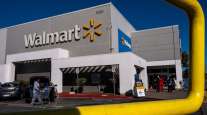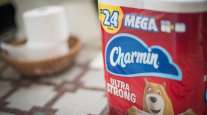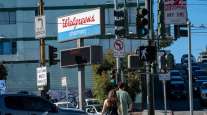Online Shopping Boosts Holiday Sales, Retail Group Says

U.S. holiday shopping is on track for a modest 3.7% rise this year after strong turnout during the Thanksgiving and Black Friday weekend and thanks to strong online sales, the National Retail Federation said Nov. 29 after releasing an annual consumer poll.
The industry group’s poll this year uses different methodology than last year, and it did not estimate total sales for the four-day weekend. But its broad conclusions added to other research showing that in-store shopping was about the same as a year ago and that online shopping had jumped, putting total sales ahead of last year.
Black Friday is considered the kickoff to holiday shopping, and retailers will change strategy based on the weekend’s sales. Last year, retailers continued Black Friday-level discounts into December, sparking a buying rush in the week before Christmas.
Matt Shay, CEO of NRF, said that he was encouraged by signs of improving consumer sentiment, helped by low unemployment and cheap gas. He said retail executives he had spoken to generally were pleased with how the weekend went.
"Consumers are in a good place to get us to a very good holiday season," Shay said on a conference call. "I think we are in a very good place based on the results of the last few days to be right in that range."
Discount sellers such as TJ Maxx and Ross Stores Inc., as well as JCPenney Co. and Toys R Us Inc. performed well, said analyst Burt Flickinger, whose Strategic Resource Group surveyed shoppers all weekend.
People on average bought more and paid less for it, said Craig Johnson, principal at retail consultancy Consumer Growth Partners. He projected total weekend sales would be up 2% from last year, as rising online sales balanced out slowing in-store demand.
By changing its survey methodology, NRF threw a curve ball for analysts and media that closely watch its spending numbers for the Thanksgiving weekend.
NRF said that its survey of 4,281 consumers, conducted Nov. 27-28 by research firm Prosper Insights & Analytics, showed that shoppers on average spent about $300 over the four-day weekend through Nov. 29.
NRF said that is not comparable with last year's figure of $381 due to changes in methodology. It found 151 million people would shop in stores and online over the weekend, beating its own forecast from a few weeks ago by some 11%. Almost equal numbers of shoppers visited physical stores and shopped online, it said.
Prosper Principal Analyst Pam Goodfellow noted that the question on spending in the new survey offered suggestions on what types of products it wanted feedback on like home decor and apparel, reducing the possibility that shoppers would include spending on food in their answers.
The new survey also specifies it is asking about the Thanksgiving weekend, while the previous poll does not appear to have been as clear, said Ramesh Swamy, a longtime retail analyst and executive vice president of retailer Curacao.
"It is important that the methodology for the 2015 survey has changed dramatically," Goodfellow said. "It's like comparing this year’s apple to last year’s orange. You just can’t do it."
The change in methodology came after the survey fell under scrutiny in recent years, including last year when it showed average spending had dropped 6.4% and total spending over the weekend slid 11% to $50.9 billion, sparking worries about spending that proved largely unfounded as retail sales over the season rose 4.1%.
Shay said he thought retailers had been able to attract a higher number of shoppers than initially forecast over the Thanksgiving weekend because of promotions and better targeting of consumers through the "small screen" of their mobile phones.
But the NRF survey also pointed to the risk of tough price competition ahead. One-third of shoppers said all of their purchases over the weekend were driven by promotions, and two in five said they think discounting will increase from now until Christmas Day.
Separate research released Nov. 29 by analytics firm comScore showed that spending through desktop computers rose 9% to $1.1 billion on Thanksgiving Day, and increased 10% on Black Friday to $1.66 billion.




